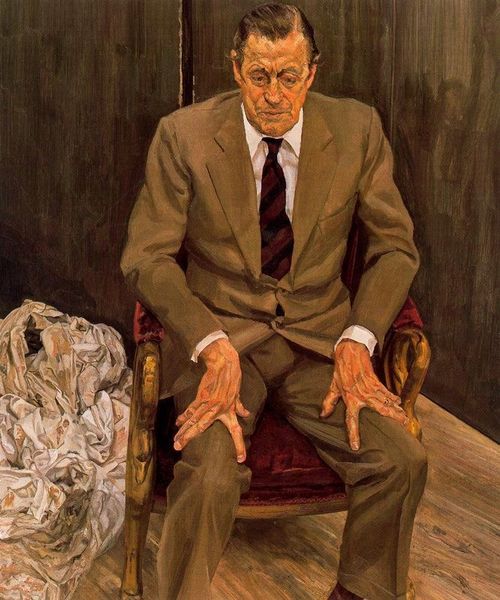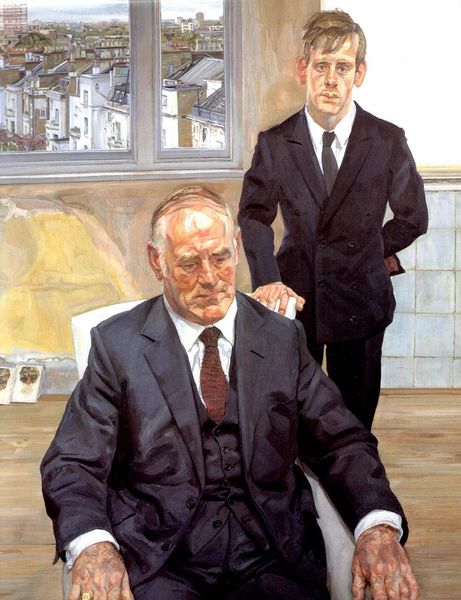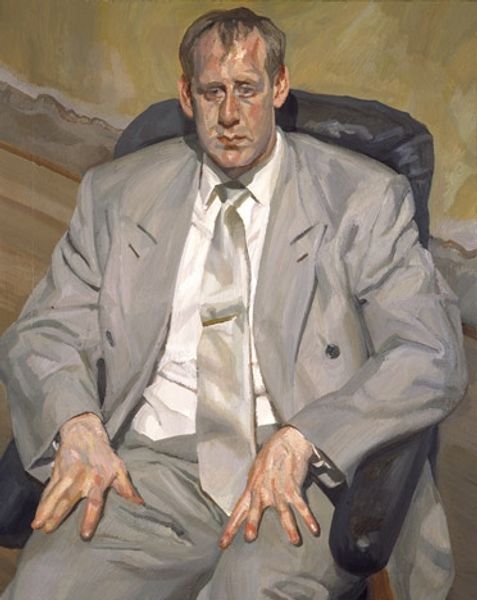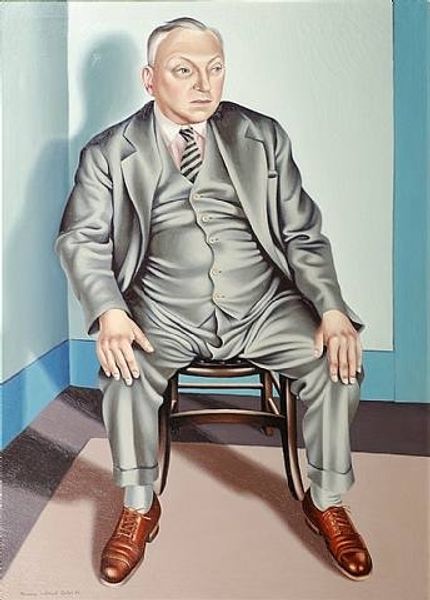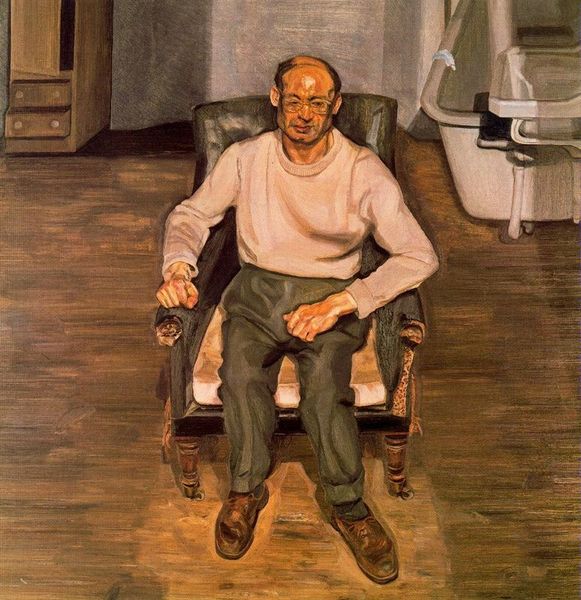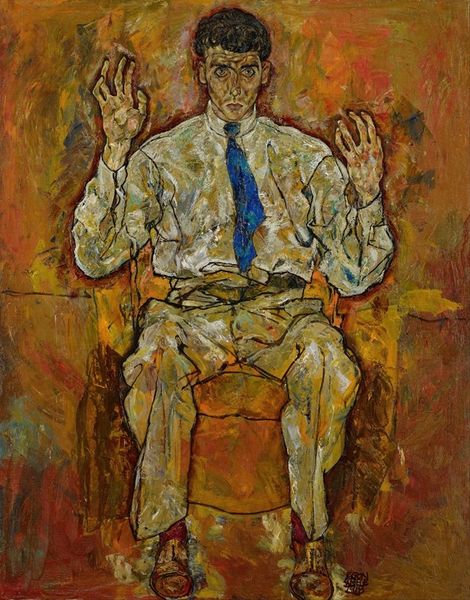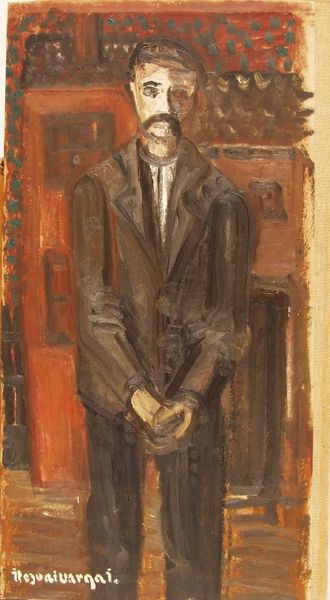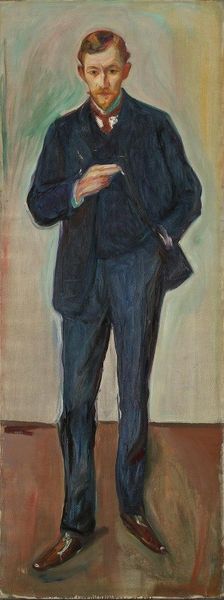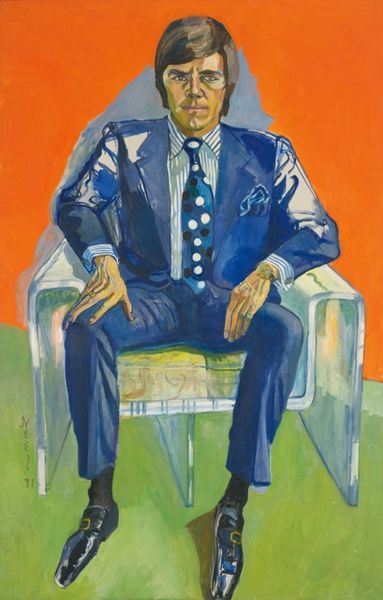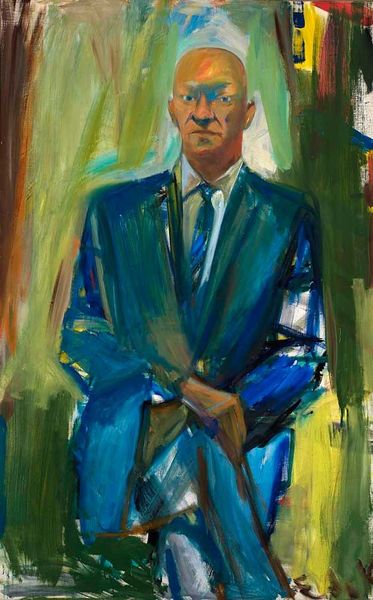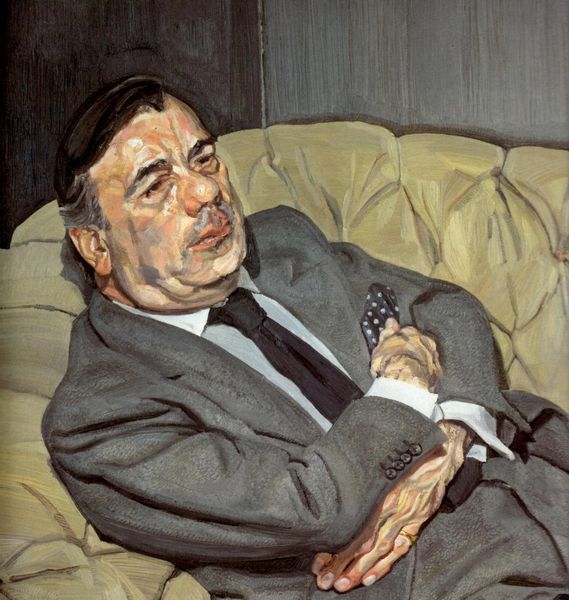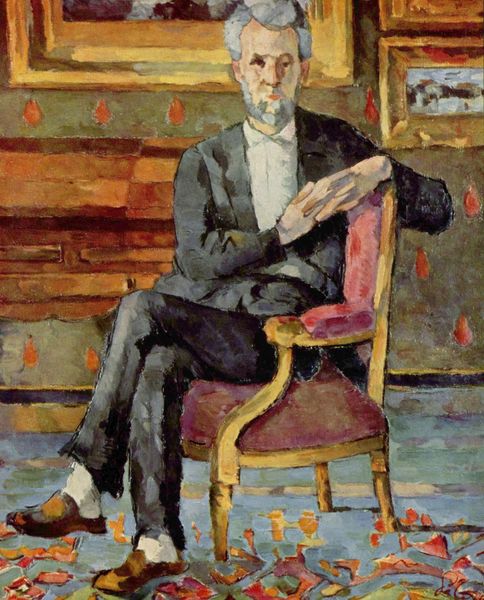
#
portrait
#
portrait
#
portrait subject
#
portrait reference
#
male-portraits
#
portrait head and shoulder
#
human
#
portrait drawing
#
facial portrait
#
sitting
#
portrait art
#
fine art portrait
#
celebrity portrait
#
digital portrait
Dimensions: 91.4 x 91.4 cm
Copyright: Lucian Freud,Fair Use
Curator: Welcome. Let's observe Lucian Freud’s painting, "The Big Man," completed in 1977. Editor: Immediately, the painting exudes a kind of heavy stolidity. The subject dominates the composition with both his physical bulk and the somewhat severe expression on his face. There's a definite air of authority, or perhaps, weary resignation. Curator: Freud's technique is very apparent here. Observe the impasto, the thick application of paint, particularly in the face and hands. The rough, almost sculptural texture lends the subject a tangible weight. There is an unsettling emphasis on verisimilitude in his depiction, too, every line and bulge visible, as if stripped bare. Editor: Absolutely. Consider that vulnerability, set against this depiction of dominant masculinity. Who is this “big man,” really? What societal roles or expectations have molded him, marked him so physically and psychologically? His gaze seems distant, inward, reflecting perhaps on those very pressures. And look at the second figure seated in the shadows behind. What commentary on male identity is suggested by placing him so near and yet, unseen? Curator: Interesting reading, but one might see the second, half-obscured figure in structural terms. By disrupting spatial logic, the inclusion might draw further attention to the compositional structure as the main figure commands central prominence through clear contouring, as his darker color contrast draws forward against the blurred area to the upper rear, setting this subject firmly against that ambiguous background and figure. Editor: Freud always maintained that he simply painted what he saw. Still, as viewers we bring our own context. The era in which Freud produced "The Big Man," for instance – amid second-wave feminism – certainly encourages readings that look for depictions or even subversions of power. I question the intention of naming it "The Big Man" specifically. The effect can suggest social critique. Curator: It prompts a deeper awareness of the visual language in use. How the color choices of earth tones against the lighter background function to set spatial dimensions for instance, to better perceive these artistic techniques—isn't that the core experience of viewing art? Editor: Yes, but for me, it’s also about considering the layers of history, ideology, and personal experience that are embedded within and emanate from the canvas. Curator: Indeed, a compelling reminder of how form and content intertwine to offer rich, albeit distinct, perspectives. Editor: Precisely. A fitting thought with which to end.
Comments
No comments
Be the first to comment and join the conversation on the ultimate creative platform.
